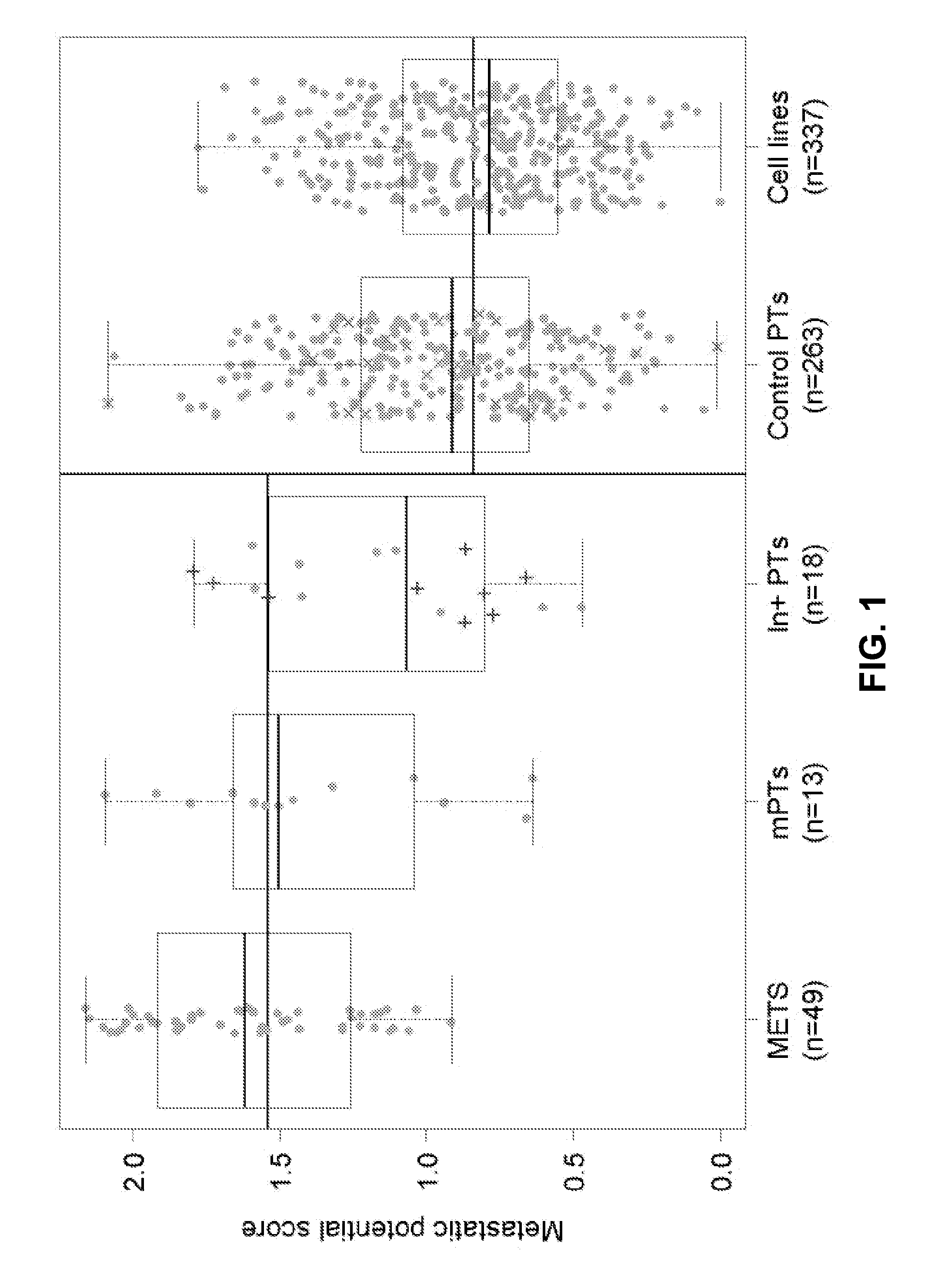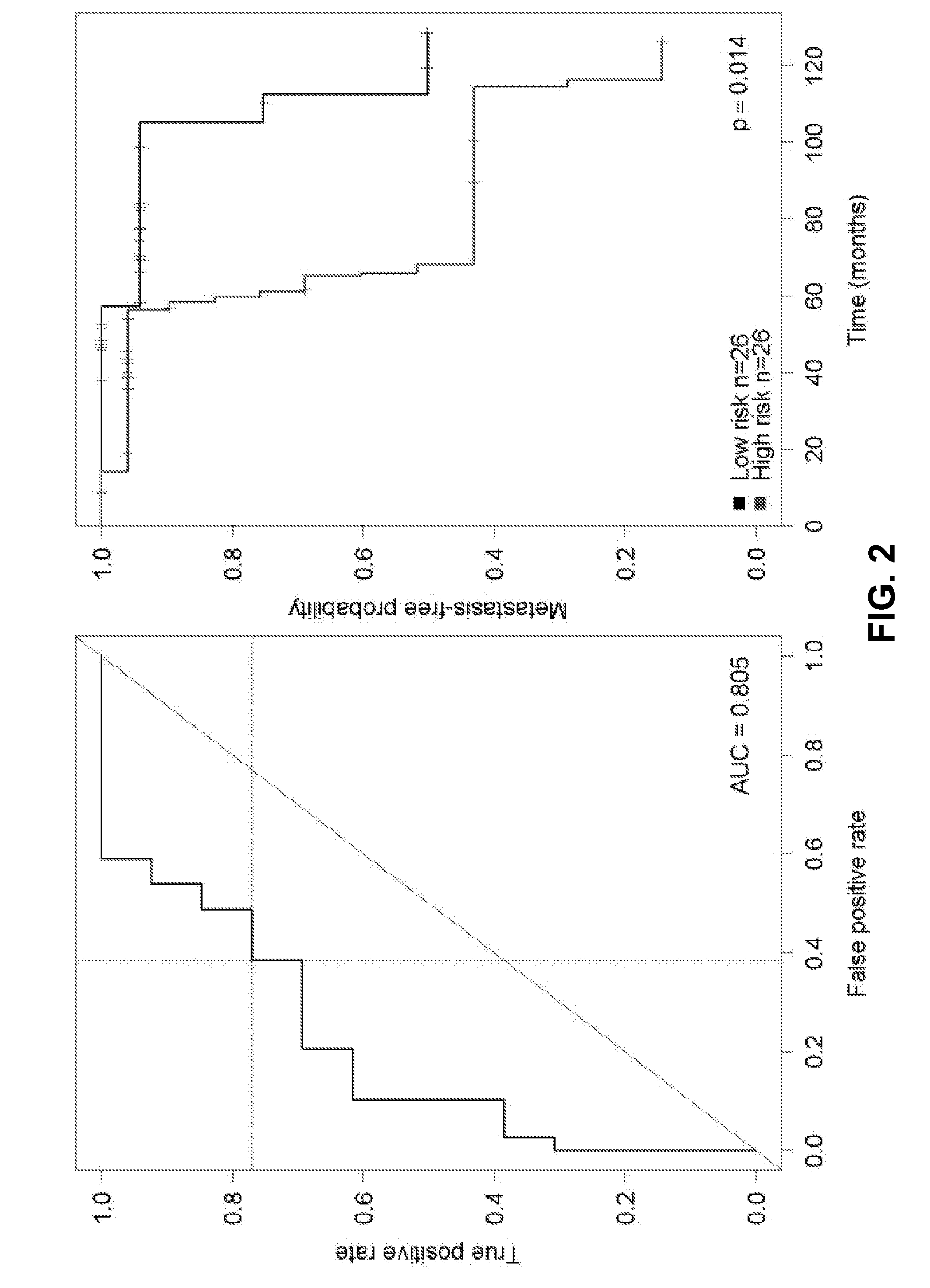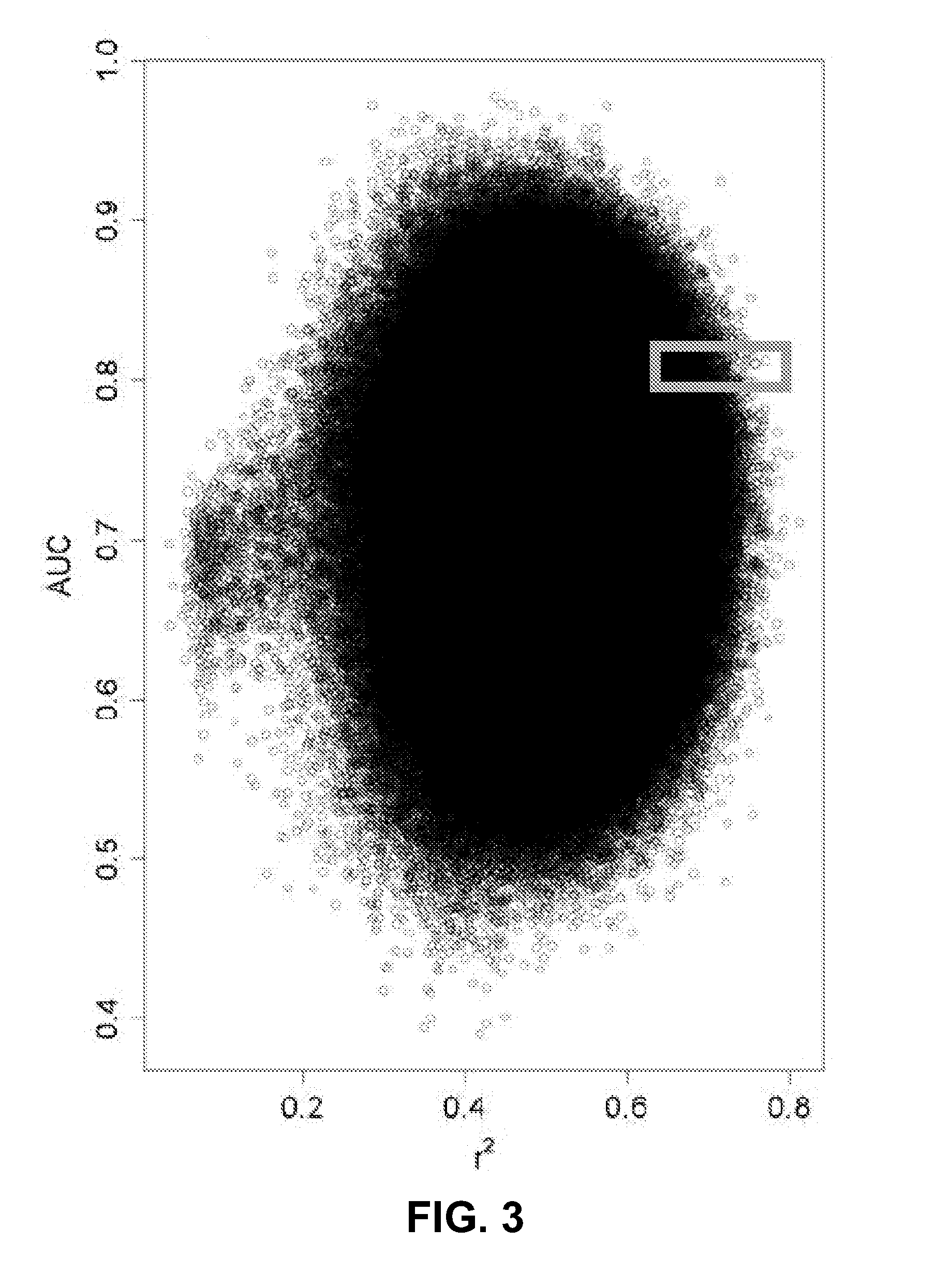Genomic signatures of metastasis in prostate cancer
- Summary
- Abstract
- Description
- Claims
- Application Information
AI Technical Summary
Benefits of technology
Problems solved by technology
Method used
Image
Examples
example 1
[0061]This Example describes the methods and sample sources utilized for developing a predictive metastasis model.
[0062]Predictive Biomarkers
[0063]The method chosen for developing the predictive metastasis model was the analysis of copy number alterations (CNAs) in prostate cancers. These cancers have been known to harbor multiple genomic imbalances that result from CNAs (Beroukhim et al., Nature 463(7283):899-905 (2010); Sun et al., Prostate 67(7):692-700 (2007)). High-resolution measurements of CNAs have informative value—in some cases providing direct evidence for alterations in the quantity of normal, mutant or hybrid-fusion transcripts and proteins in the cancer cells. The resulting RNA transcripts and proteins may impact the fitness of the cell and provide the mechanisms necessary for travel, invasion and growth. From the multiple CNAs identified in tumors, CNA-based gene signatures were developed to predict the likelihood of a primary tumor progressing to metastasis.
[0064]Sam...
example 2
[0072]This Example describes the analytical pipeline for developing a metastatic potential clinical risk model.
[0073]An analytical pipeline was developed using the R-statistical softwarel comprised of four main steps:
[0074]In step 1, copy number amplification and deletion events for each tumor genome were called. A tumor genome's signal intensity profile was referenced (subtracted) from its matched normal genome intensity profile resulting in a copy number profile for each tumor. Each sample's copy number profile was represented numerically as −1, 0 or 1 (deletion, no event, or amplification) for each genomic position assayed by the array. A summary metastasis profile (indexing high frequency events) was also created where −1 and 1 represent deletions and amplifications, respectively, observed in greater than 25% of the metastasis cohort.
[0075]In step 2, a bootstrap clustering method was employed to develop an initial grouping for the unknown primary tumors. The summary copy number ...
example 3
[0084]This Example describes the results achieved by the predictive metastasis model developed as described in Examples 1-2.
[0085]Metastatic Potential Score Distributions
[0086]Significant differences in the metastatic potential score were observed for the metastasis (p=1.03E-18) and mPT (p=0.005) groups, compared to the control primary tumors (FIG. 1 and Table 3). The metastatic potential score in the lymph node positive primary tumors (derived from the MSK (n=9) and SU (n=9) cohorts) did not differ significantly from the control tumor group (PMSK=0.23, Psu=0.19, Pcombined=0.08), which reflected the marginal ability of this clinical parameter to predict distant metastasis (BOORJIAN et al., Journal of Urology 178(3 Pt 1): 864-70; discussion 70-1 (2007)). Consistent with our assumption that the control cohorts contained a fraction of mPTs, their metastatic potential score overlapped the range of the cases. Furthermore, control primary tumors that did not recur biochemically (as measur...
PUM
 Login to View More
Login to View More Abstract
Description
Claims
Application Information
 Login to View More
Login to View More - R&D
- Intellectual Property
- Life Sciences
- Materials
- Tech Scout
- Unparalleled Data Quality
- Higher Quality Content
- 60% Fewer Hallucinations
Browse by: Latest US Patents, China's latest patents, Technical Efficacy Thesaurus, Application Domain, Technology Topic, Popular Technical Reports.
© 2025 PatSnap. All rights reserved.Legal|Privacy policy|Modern Slavery Act Transparency Statement|Sitemap|About US| Contact US: help@patsnap.com



